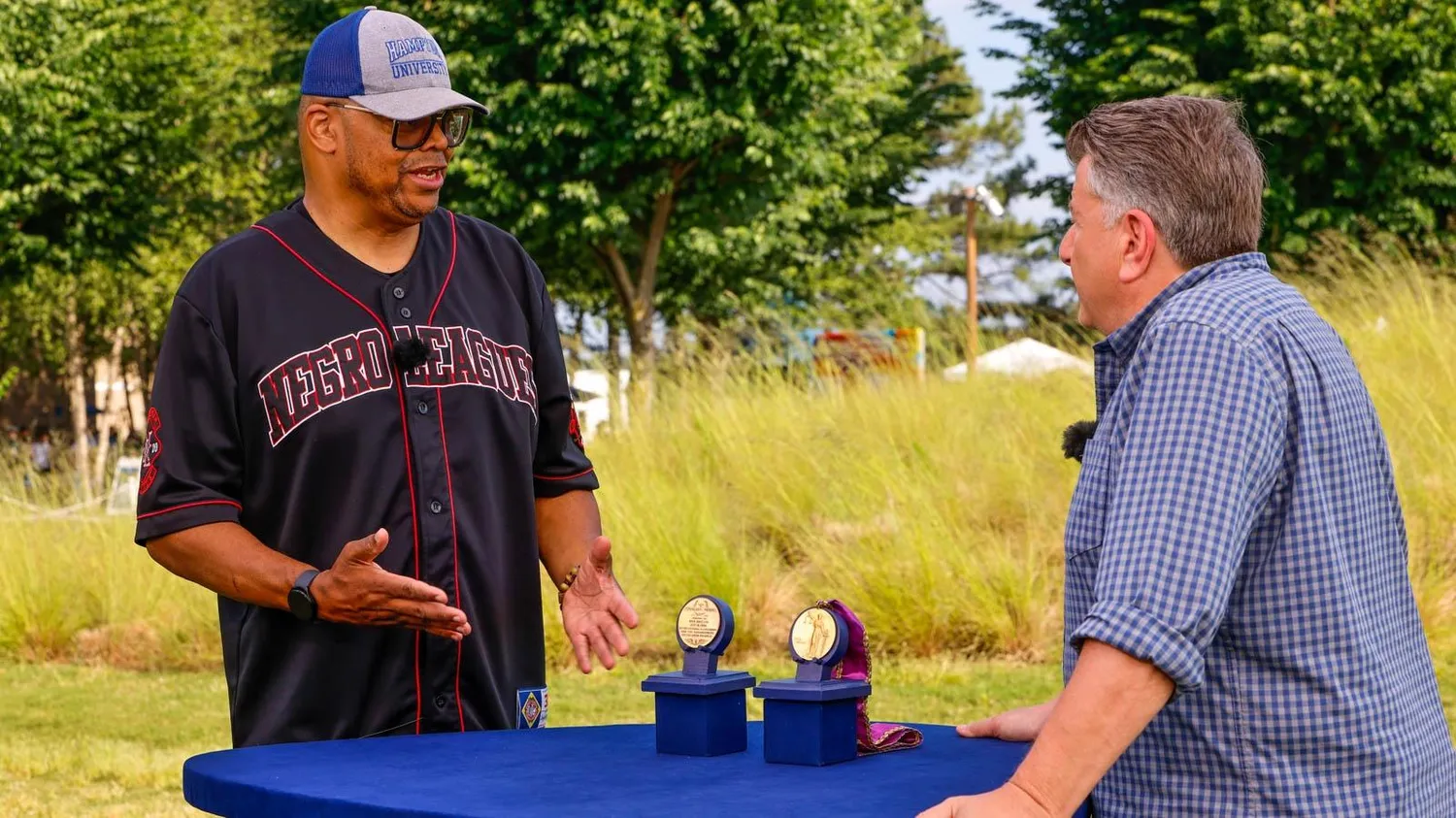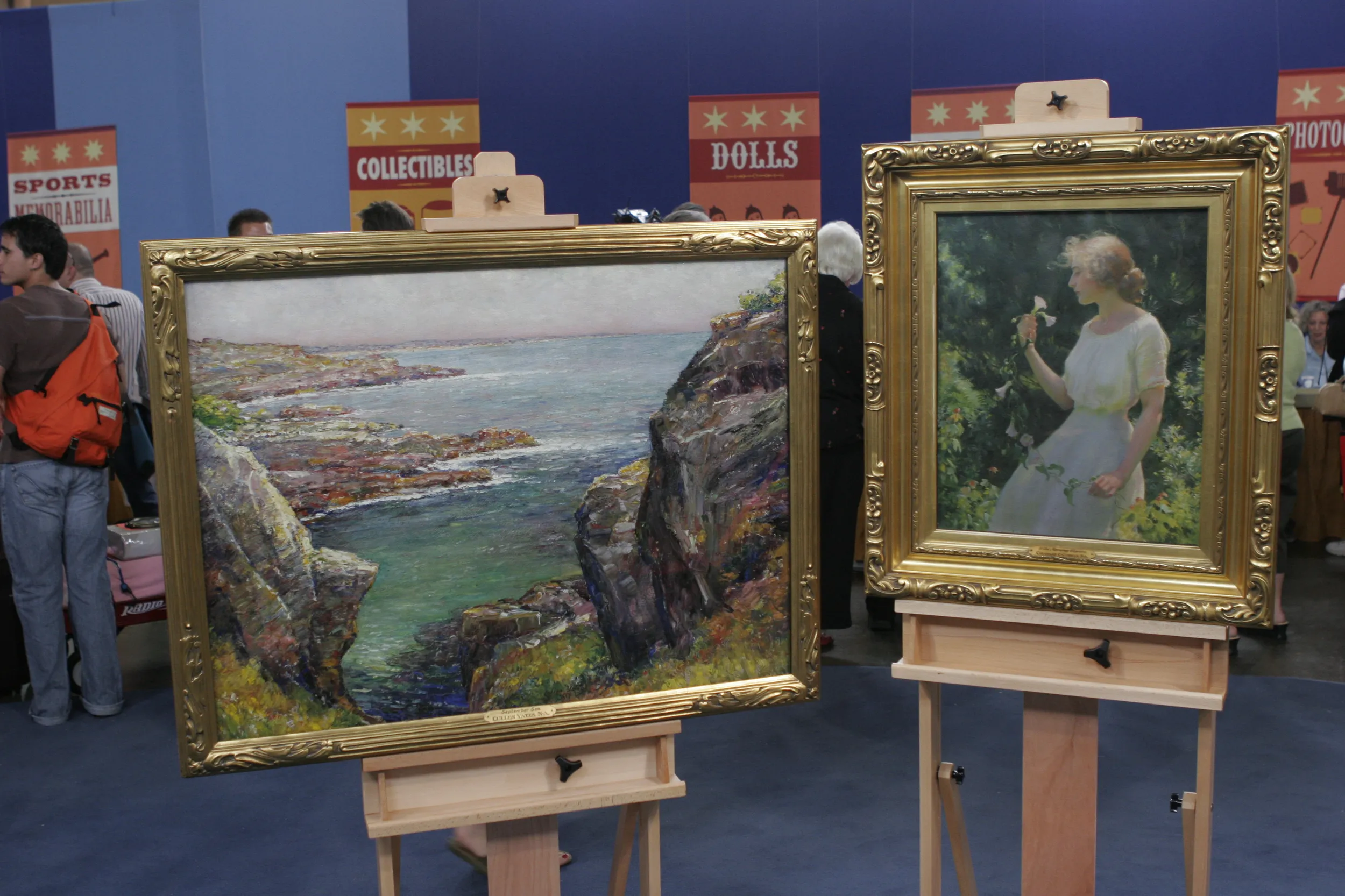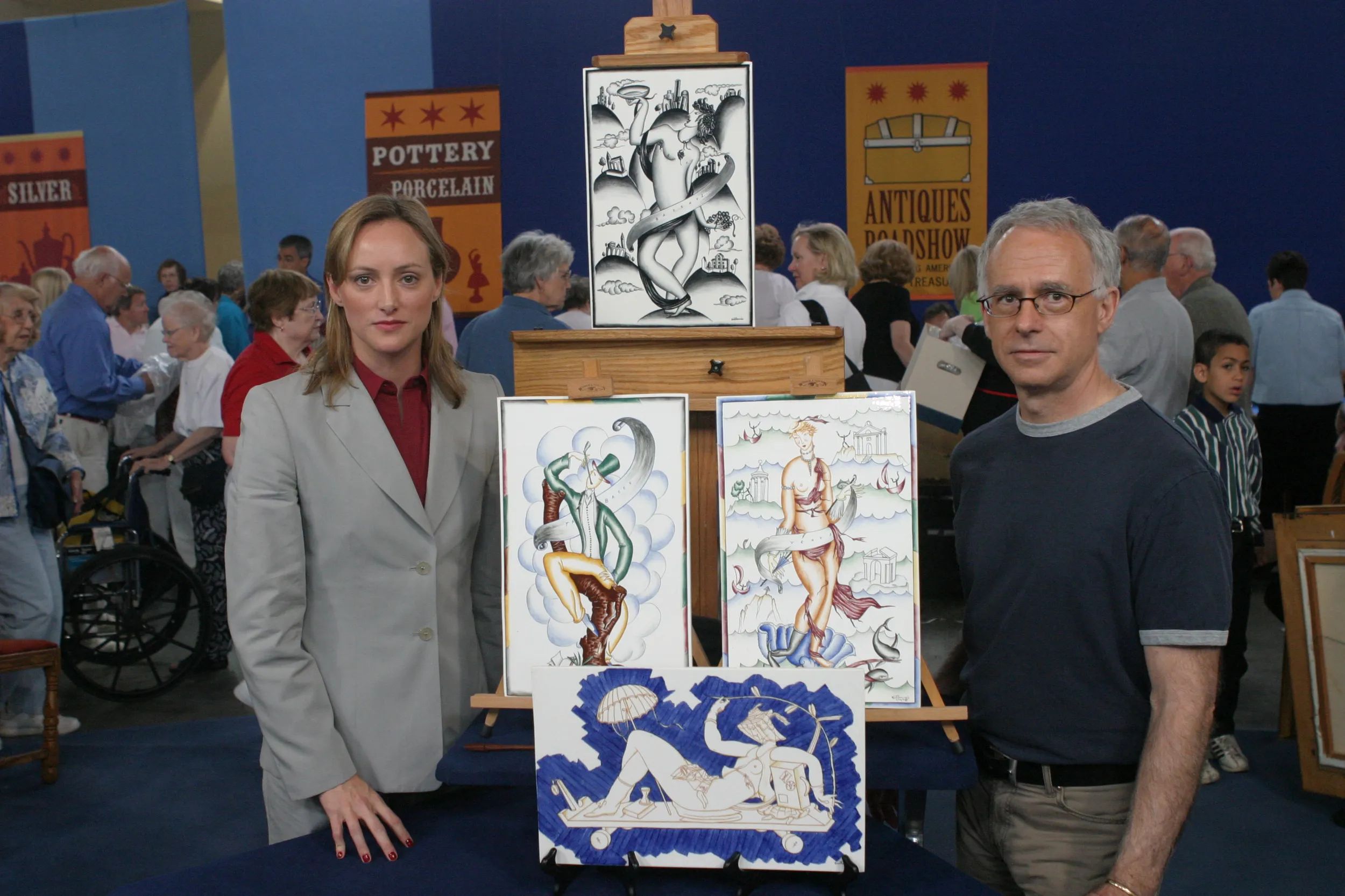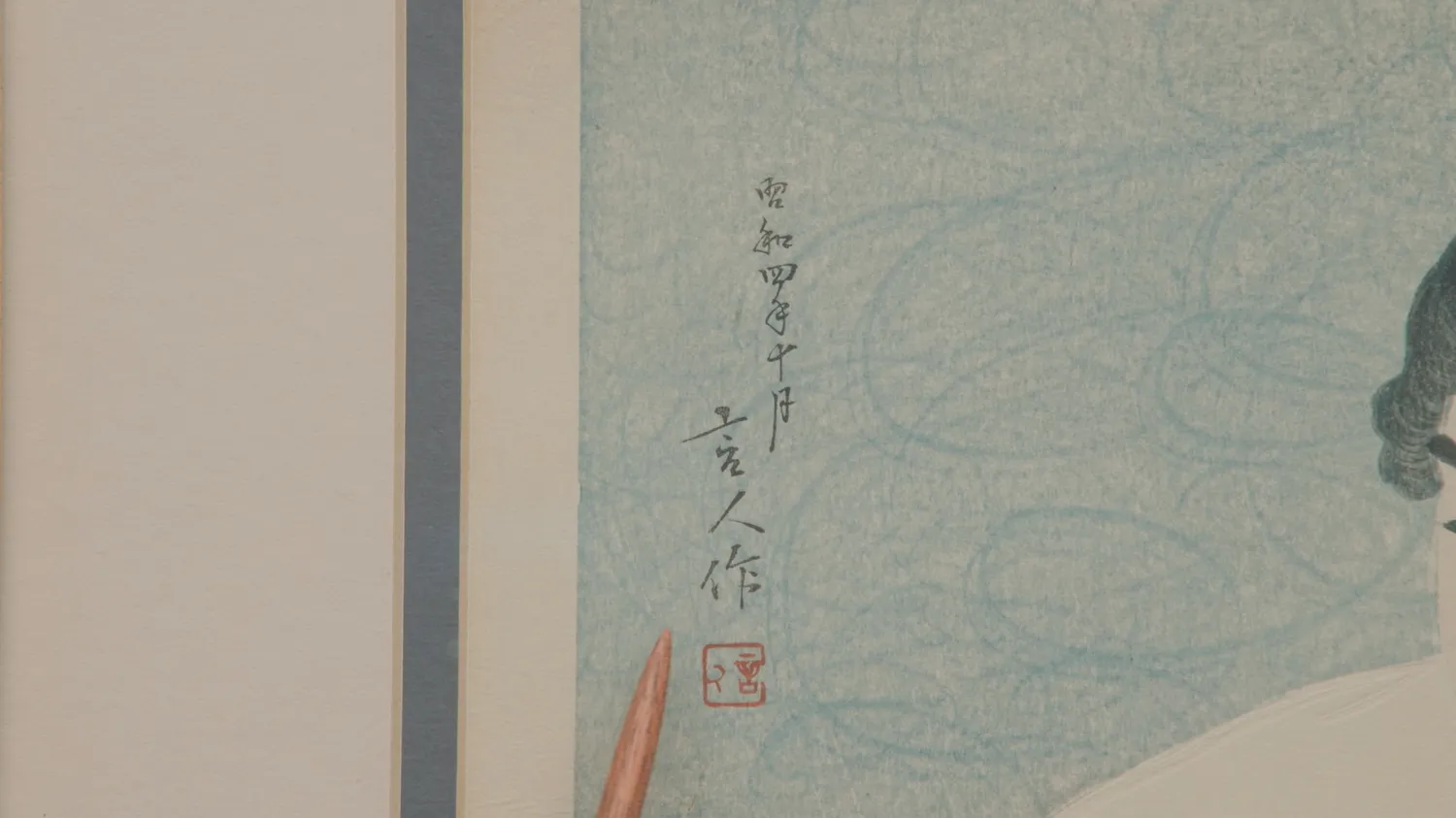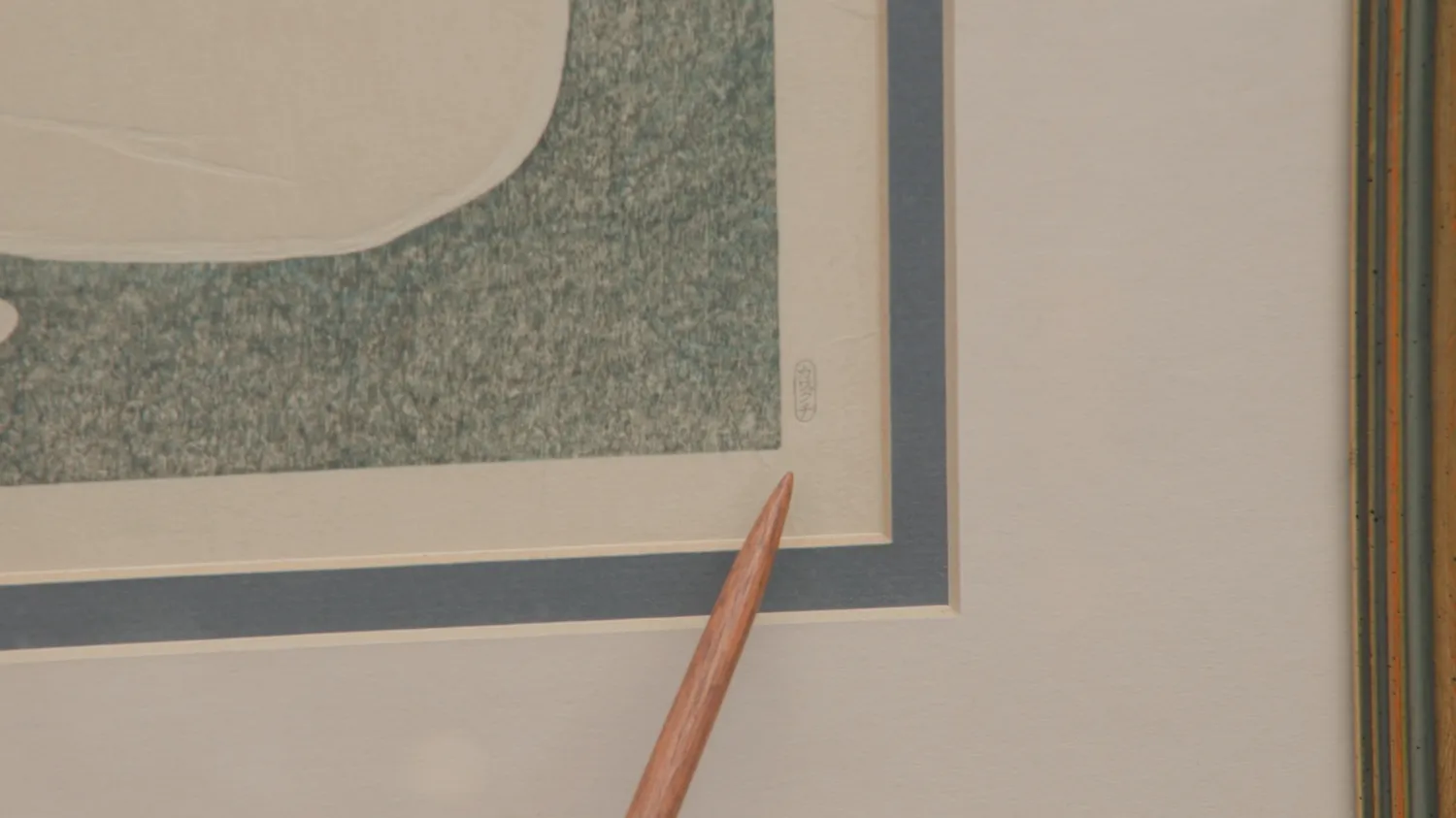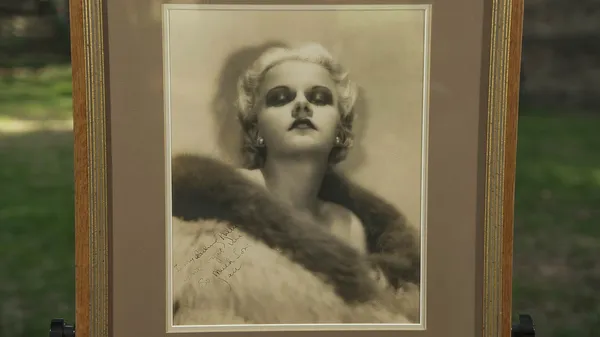GUEST: I'm hoping it's a woodblock print.
APPRAISER: Mm-hmm?
GUEST: A friend of mine gave me, or let me choose, two. And these prints were given to her by her aunt, who had a friend that had a friend that worked in the embassy during World War II.
APPRAISER: Ah.
GUEST: So they were exchanged, I, we were told, for food, medicines, or whatever.
APPRAISER: Yeah, yeah.
GUEST: She was given a, a, a fairly good-sized stack of all kinds.
APPRAISER: Mm-hmm.
GUEST: And she told me I could pick two. And this was my favorite.
APPRAISER: Oh, you did well.
GUEST: Oh, good. (both laugh)
APPRAISER: You know what it is?
GUEST: I think it's a woodblock.
APPRAISER: Yes, it is. A woodblock print.
GUEST: I'm hoping-- that's what we were told.
APPRAISER: Yes, woodblock print.
GUEST: Okay.
APPRAISER: But, uh, um, not traditional one. It's an early 20th century...
GUEST: Ooh.
APPRAISER: ...called sosaku-hanga. So the, uh, artist, Kotondo, is very famous.
GUEST: Okay.
APPRAISER: And all the print collectors like him. His, um, last name was Torii.
GUEST: Okay.
APPRAISER: And he's, um, famous, um, maker, famous, uh, printmaker, making, uh, posters for kabuki. Also, uh, he did bijin-ga, meaning "beautiful women prints." It's very popular.
GUEST: That's where this comes from, yeah, okay.
APPRAISER: Yes and he worked in Tokyo. And it's signed here, Kotondo. Here-- it says its artist's name and the artist's name in a seal. It's dated Showa, Showa-- fourth of Showa. So that's around 1930s.
GUEST: Okay.
APPRAISER: And she's combing her hair, actually, right?
GUEST: Yeah.
APPRAISER: You can see. Yes.
GUEST: Yeah, long hair.
APPRAISER: Yes, yeah, long hair. So the title is, it's embossed.
GUEST: Oh! Yes, it is!
APPRAISER: Can you see?
GUEST: I see, I never saw that before.
APPRAISER: Says "Kamisuki," meaning, uh, "Combing Hair."
GUEST: Huh? Never saw that.
APPRAISER: Wonderful, yes. Yes.
GUEST: And I called it "The Girl With a Comb."
APPRAISER: When they do a block, it's not one. You have to make several.
GUEST: Oh.
APPRAISER: You have to do the key block, which is just black outline, and then you have to do red, the lips, and yellow for the comb.
GUEST: Jeez.
APPRAISER: You see? So you probably have to do four, five different blocks.
GUEST: Oh, wow.
APPRAISER: Japanese prints are not numbered, yeah.
GUEST: Oh, okay.
APPRAISER: But they probably made about 200. So, yeah, I have seen this, it's one of my favorite.
GUEST: Oh, you're kidding.
APPRAISER: So I was surprised to see it in, uh...
GUEST: I have looked, I have gone on the computer. I have never found it.
APPRAISER: Oh, you haven't? Yeah, okay.
GUEST: No, never saw it before, again.
APPRAISER: Oh, I see. Yes, and you probably wonder how much that would be, 'cause you didn't pay for it, right? You picked. (chuckles) What do you think?
GUEST: $500?
APPRAISER (laughs): No, much more.
GUEST: Ooh.
APPRAISER (laughing): Yeah.
GUEST: No, no...
APPRAISER: Um, I think in a shop, they could go for... It's a good condition, so it could go for maybe $4,000?
GUEST(gasps): Oh, my gosh! (laughs) No!
APPRAISER: On a good day, $5,000 or more.
GUEST: No idea-- none.
APPRAISER: Yeah, yes, yeah, yeah.
GUEST: Wow.
APPRAISER: But anyway, if you wait, the, the market is very good for these Japanese prints, so it might go up in prices.
GUEST: Wow.
APPRAISER: So I'll see you in five years. (both laugh)
GUEST: Yeah, oh, that's exciting.
APPRAISER: Isn't that?

